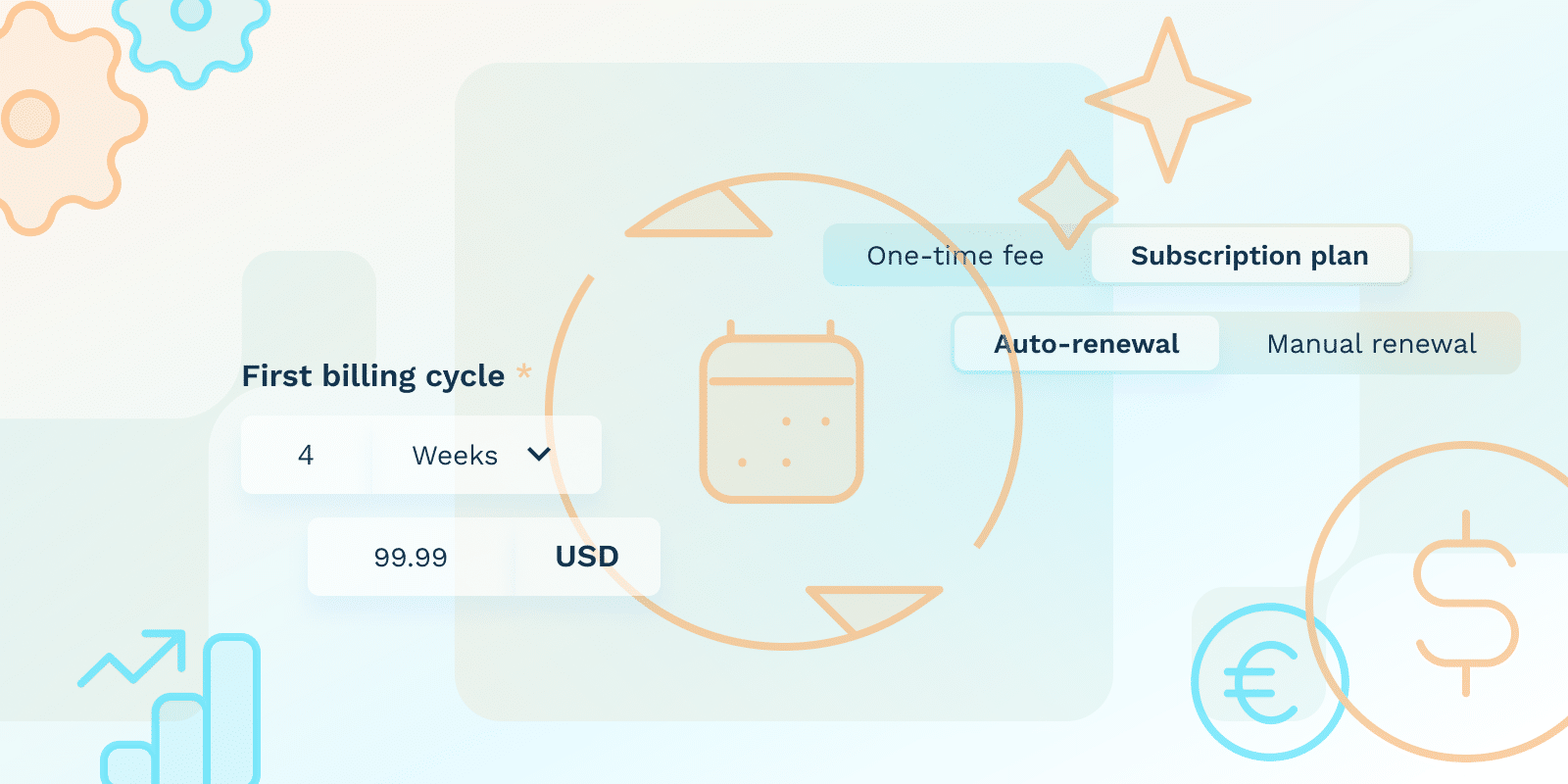Pagamentos SaaS
O que é um Ciclo de Faturação de Subscrição SaaS?

O que é um Ciclo de Faturação de Subscrição SaaS?
Um ciclo de faturação de subscrição SaaS é o intervalo de tempo agendado no qual um cliente de software é faturado pelo acesso — geralmente mensal, trimestral ou anualmente.
Compreender como estes ciclos de faturação funcionam ajuda as empresas a gerir o fluxo de caixa, a melhorar a retenção de clientes e a alinhar os preços com o comportamento do utilizador.
Quais são os tipos comuns de ciclo de faturamento SaaS?
Normalmente, as organizações SaaS selecionam entre uma variedade de tipos de ciclo de faturação, cada um dos quais atende a requisitos distintos dos clientes e do negócio:
- Pagamentos mensais: Esta estrutura de pagamento oferece aos clientes a opção de pagar mensalmente, o que pode afetar as suas despesas iniciais.
- Faturação anual: Envolve a faturação antecipada de todo o ano, o que pode afetar a previsibilidade da receita e pode incluir um desconto para os clientes.
- Faturação trimestral: Um período de três meses que equilibra o compromisso do usuário e o fluxo de receita.
- faturamento baseado no uso: Equilibra o custo e o valor, cobrando aos clientes de acordo com o seu uso.
- Faturação Híbrida: Este modelo combina subscrições fixas com componentes variáveis baseados no uso.
Cada modelo de faturação tem um impacto estratégico na estabilidade da receita, na aquisição de usuários e no preço.
Como os ciclos de faturamento impactam o fluxo de caixa e a retenção de clientes?
Os ciclos de faturação são uma alavanca fundamental na estratégia financeira de SaaS:
- Fluxo de Caixa: O faturamento anual aumenta a liquidez a curto prazo ao coletar pagamentos iniciais maiores. O faturamento mensal oferece uma receita consistente, mas pode exigir estratégias de retenção mais fortes.
- Retenção de clientes: Ciclos de longo prazo reduzem o churn ao comprometer os usuários por períodos mais longos. No entanto, os ciclos de curto prazo forçam as empresas a demonstrar valor continuamente.
- Planejamento de assinaturas: Ciclos de faturamento estendidos podem influenciar a previsão de receita e os processos de planejamento orçamentário.
A estrutura do ciclo de faturação pode estar correlacionada com o valor do tempo de vida do cliente (CLTV) e a rentabilidade.
Quais fatores influenciam a escolha do ciclo de faturamento SaaS?
O ciclo de faturação adequado para a sua SaaS cmpresa é determinado por vários fatores importantes:
- Tipo de Cliente: A faturação anual é frequentemente esperada por clientes empresariais. Clientes ou PMEs podem preferir opções mensais.
- Complexidade do Produto: A cobrança híbrida ou baseada no uso pode ser vantajosa para soluções de alta interação ou modelos de uso flutuante.
- Duração do Ciclo de Vendas: Para um melhor alinhamento, um ciclo de vendas mais longo pode favorecer intervalos de faturação mais longos.
- Sensibilidade ao Preço: Planos mensais flexíveis podem ser mais atraentes se os seus utilizadores forem sensíveis ao preço.
- Objetivos de Receita: As startups que procuram uma reserva de caixa podem preferir a faturação anual para obter fundos adiantados.
Alinhar as expectativas do utilizador com a sua estratégia de negócio e objetivos financeiros é essencial para selecionar o melhor ciclo.
Quais são as melhores práticas para gerir os ciclos de faturação de SaaS?
A precisão da receita e a confiança do cliente podem ser afetadas pela gestão eficiente do ciclo de faturamento.
- Seja transparente e honesto: Especifique claramente as condições de faturamento, as datas de renovação e os procedimentos de cancelamento.
- Opções de Faturamento: Alternativas mensais ou anuais podem atender a várias necessidades dos clientes.
- Automatize o Faturamento: Para reduzir os erros humanos, utilize sistemas de gestão de assinaturas.
- Incentive Planos de Longo Prazo: Ofereça descontos ou benefícios para incentivar compromissos anuais.
- Monitore as Métricas-Chave: Acompanhe taxas de rotatividade, pagamentos falhados, taxas de renovação, e tendências de upgrade por tipo de faturação.
- Operações de faturação eficazes: Pode correlacionar-se com um menor atrito e pode influenciar a satisfação do cliente.
Quais são os desafios e soluções comuns dos ciclos de faturação SaaS?
Muitas empresas de SaaS enfrentam dificuldades com a faturação recorrente, e estratégias adequadas podem, muitas vezes, mitigar estes desafios.
|
Desafio |
Solução |
|
Churn elevado em planos mensais |
Melhorar integração, fornecer mais valor rapidamente, oferecer promoções de upgrade anual. |
|
Pagamentos falhados ou recusados |
Configurar automaticamente processos de dunning e notificar os clientes sobre a expiração do cartão. |
|
Uso desalinhado com o preço |
Mude para híbrido ou faturamento baseado no uso para alinhar melhor o preço ao valor. |
|
Erros de faturação manual |
Automatize a faturação e a reconciliação utilizando ferramentas de software de faturação. |
|
Comunicação de faturação confusa |
Simplifique e clarifique a linguagem de faturação no onboarding e nas atualizações por e-mail para melhorar a experiência do usuário. |
Resolver estes problemas pode melhorar Retenção de clientes, a confiança e a eficiência operacional.
Conclusão
O ciclo de cobrança de assinaturas SaaS não se trata apenas de quando o dinheiro troca de mãos — ele molda o comportamento do utilizador, afeta a retenção e influencia a forma como o seu negócio cresce. A gestão do fluxo de caixa, a psicologia de preços e as necessidades do consumidor devem ser equilibradas ao escolher o melhor ciclo.